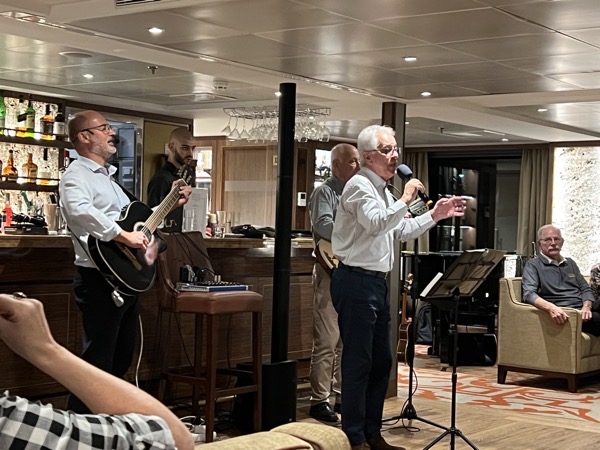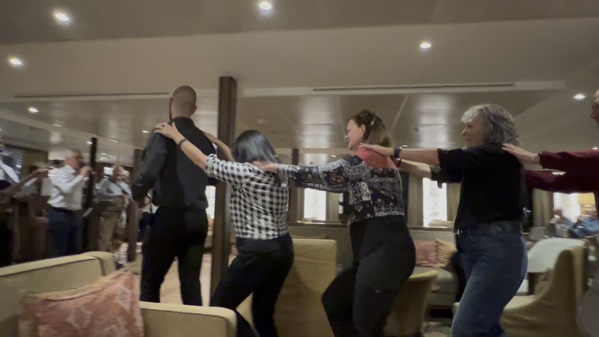Thursday, October 3, 2024
This morning, we disembarked from the MS Douro Elegance and set off by bus toward the historic city of Guimarães. Unfortunately, John M. wasn’t feeling well, so he decided to remain on board, allowing him to enjoy the cruise as the ship moved upriver and through a lock to meet us later in the day. While traffic leaving Porto was once again quite heavy, the rest of the journey was smooth, and we enjoyed the scenic hour-and-a-quarter trip northwest.
Guimarães is a historic city often referred to as the “birthplace of the nation” due to its pivotal role in the foundation of Portugal in the 12th century. Our first stop in Guimarães was the Palace of the Dukes of Braganza (Palácio dos Duques de Bragança). In the plaza in front of the palace, we encountered a statue of Afonso Henriques (1109–1179), the first King of Portugal who’s considered the nation’s founder.
Built in the 15th century, the palace was originally the residence of the Dukes of Braganza, one of Portugal’s most influential noble families. The palace is a striking example of medieval architecture, but also blends in Gothic, Manueline, and early Renaissance styles. Our Smithsonian Journeys guide, Helena, was excellent, offering insightful narration as we explored several grand rooms adorned with period furniture, tapestries, and artwork that showcased the history and wealth of the Braganza family.
—— Statue of Afonso Henriques, 1st King of Portugal ——

—— Palace of the Dukes of Braganza ——
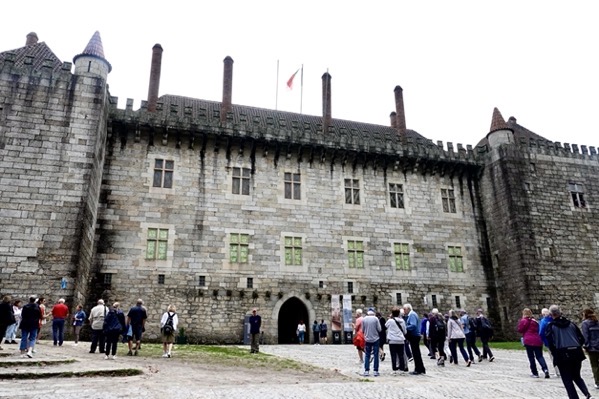
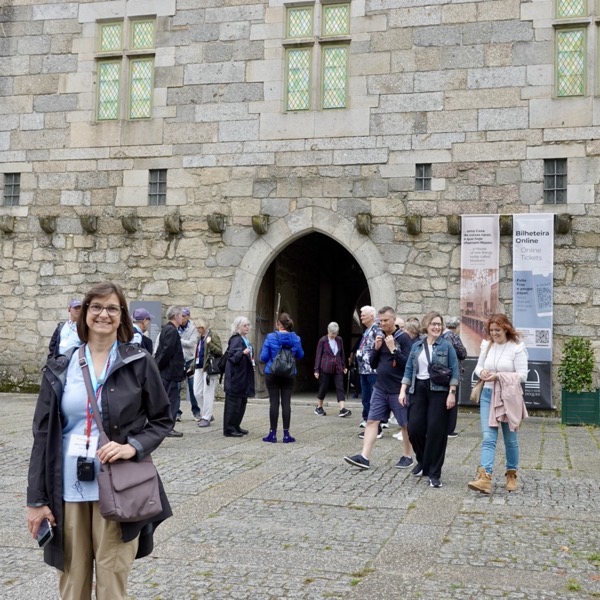
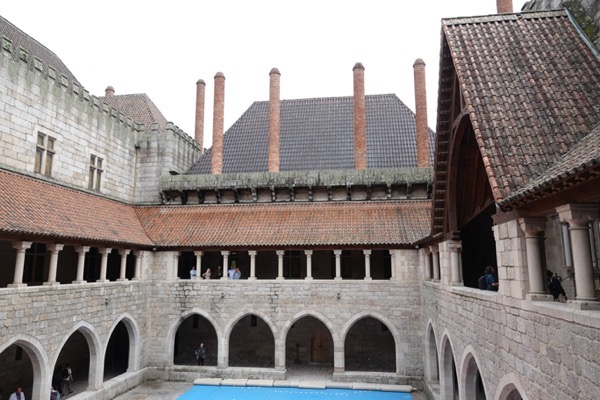
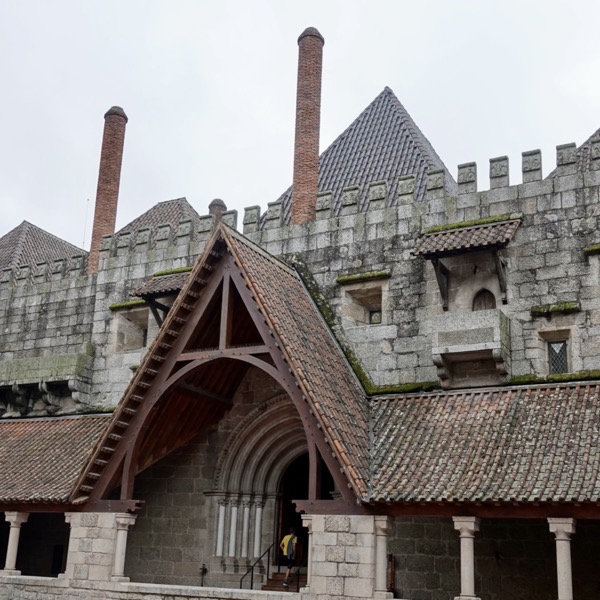
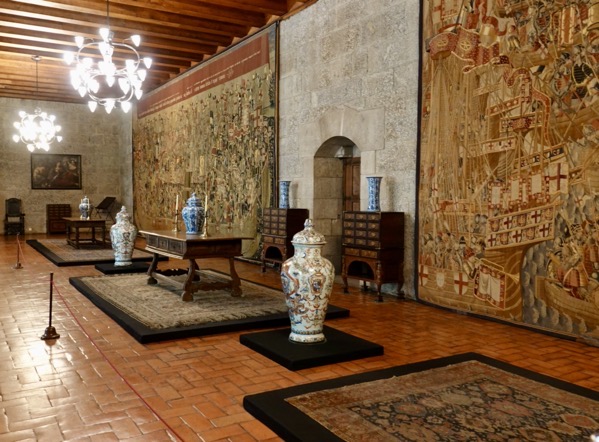
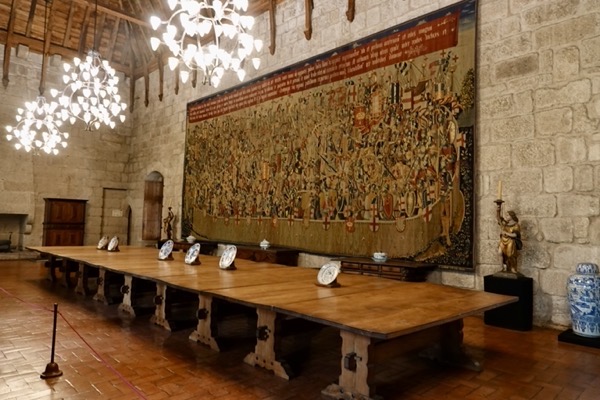

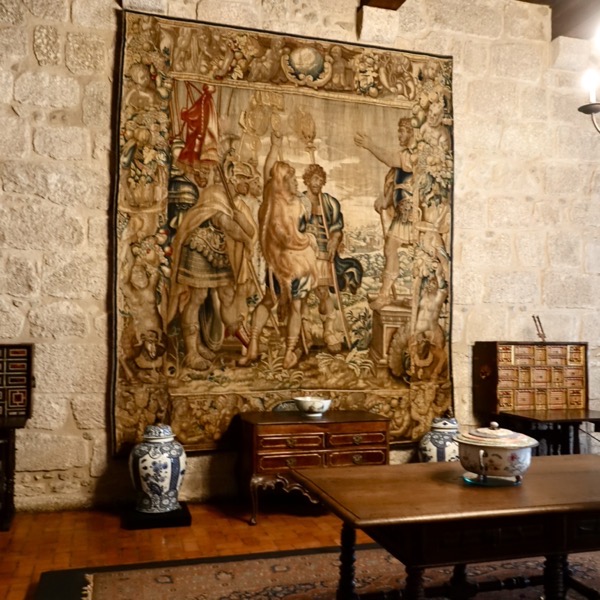
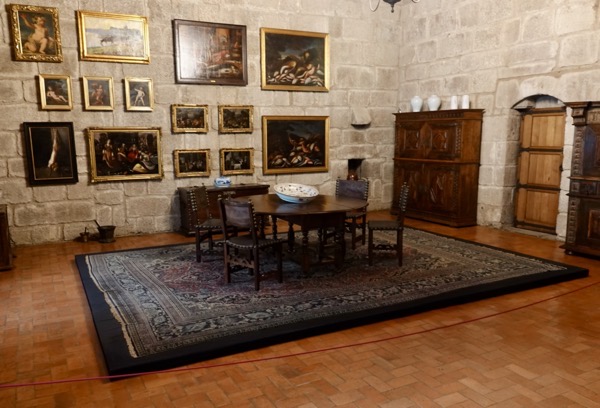

Next, we visited the Church of Our Lady of the Olive Tree (Igreja de Nossa Senhora da Oliveira). This Gothic-façaded church dates back to the 14th century and its name, “Oliveira,” is believed to be derived from an olive tree that once stood nearby, symbolizing peace and prosperity. Inside, the church exuded a serene atmosphere. I particularly appreciated the impressive wooden cravings as well as the decorative tiles and religious artwork.
—— Church of Our Lady of the Olive Tree ——

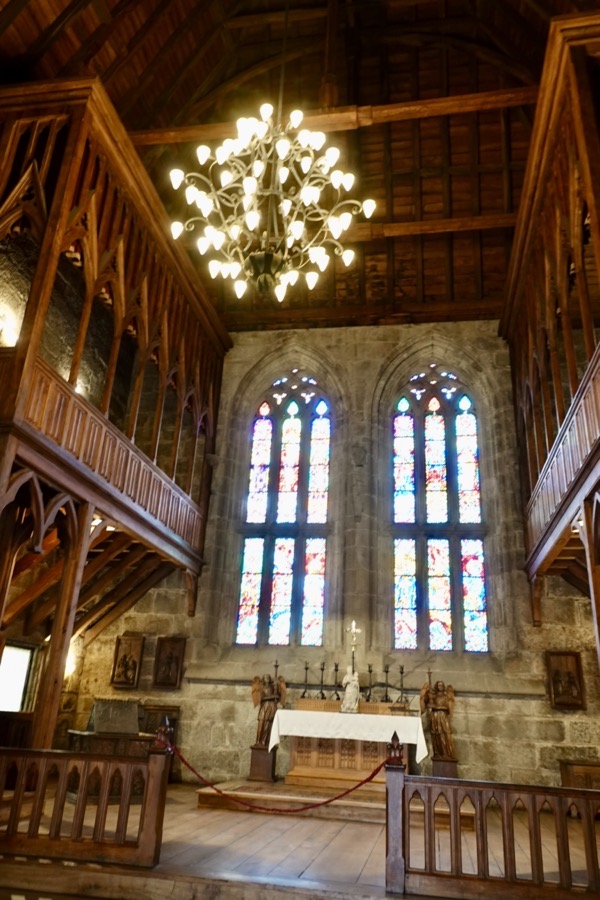
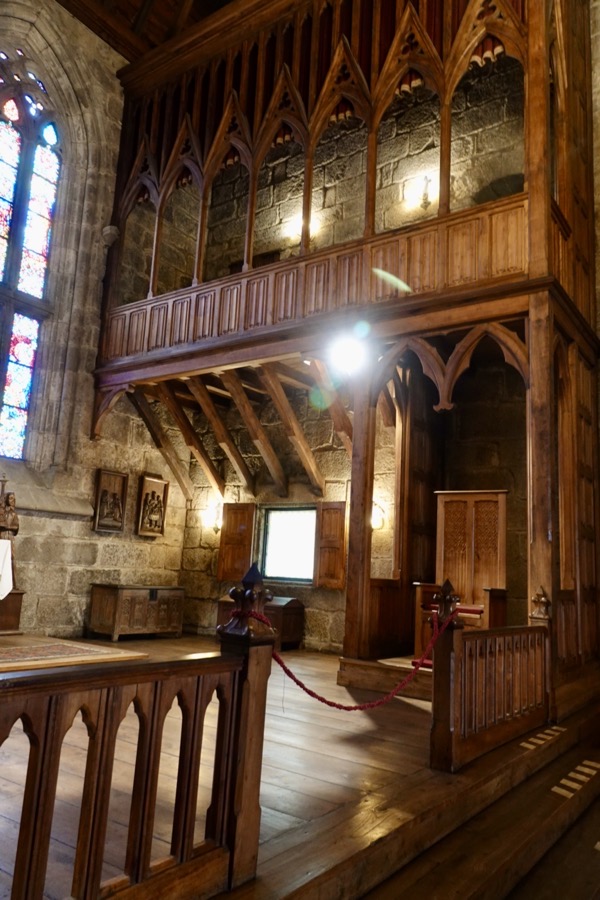
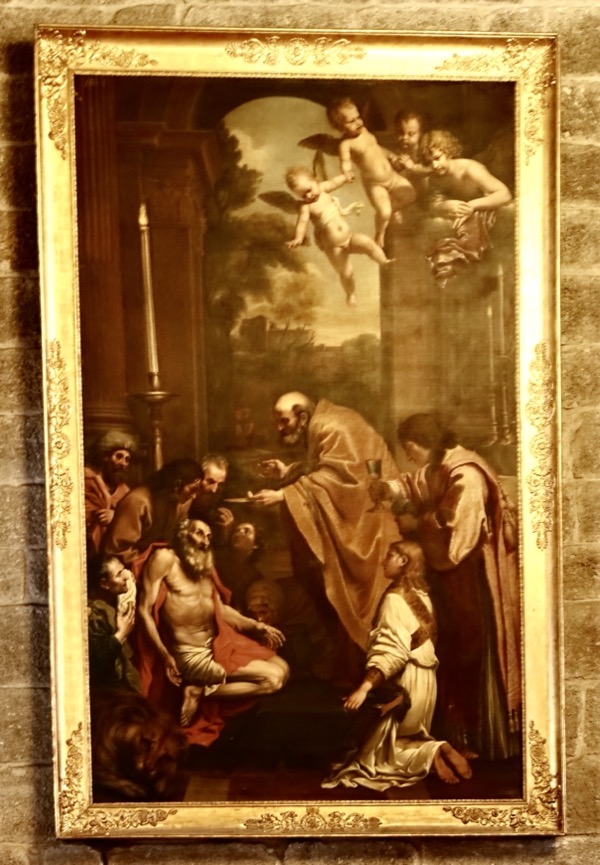
After touring the church, we were given free time to explore Guimarães on our own, starting with the lovely and historic Rua de Santa Maria. This charming cobblestone street winds through the town’s historic center and is lined with traditional buildings, many of which date back to the medieval and early modern periods. On Helena’s suggestion, we stopped at a local bakery to buy some spaghetti squash tarts and pastries to enjoy on the upcoming bus ride. Although, it rained a bit during our wanderings, the temperature was comfortable. After our allotted time, we reluctantly concluded our leisurely stroll through this quaint town and climbed back onto the bus. At least we had our delicious treats to enjoy while we traveled.
—— Walking around Guimarães ——
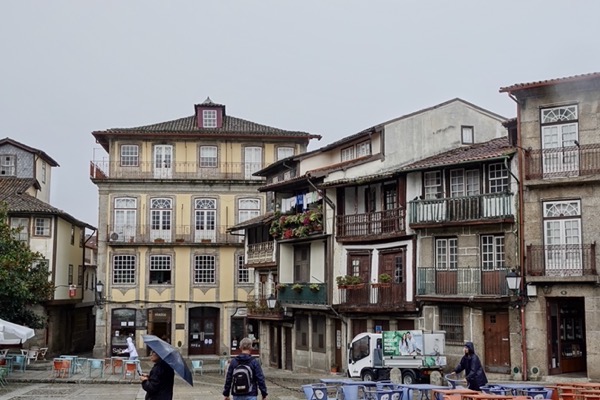

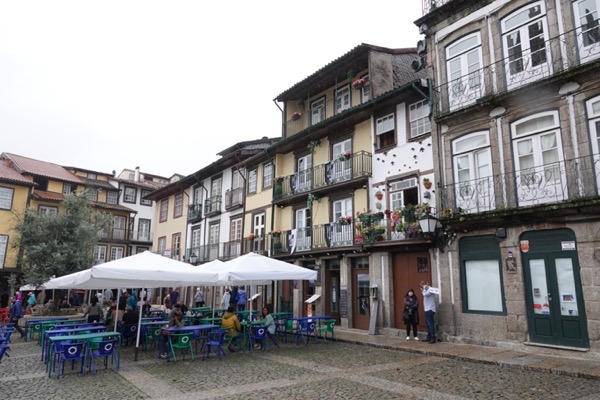
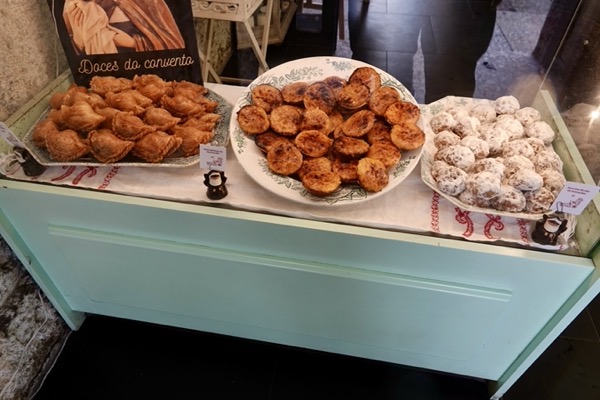
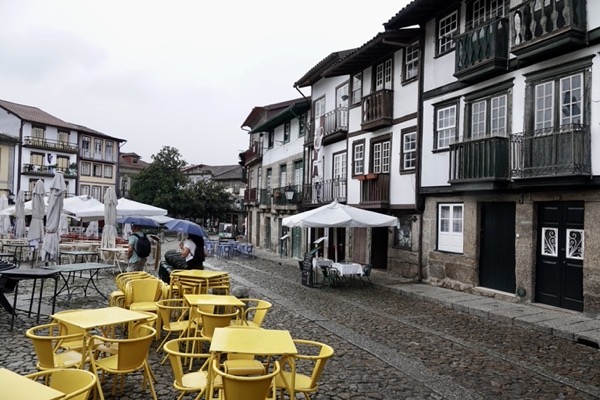
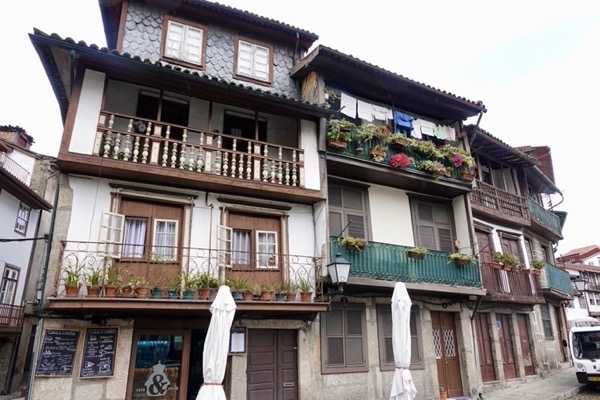
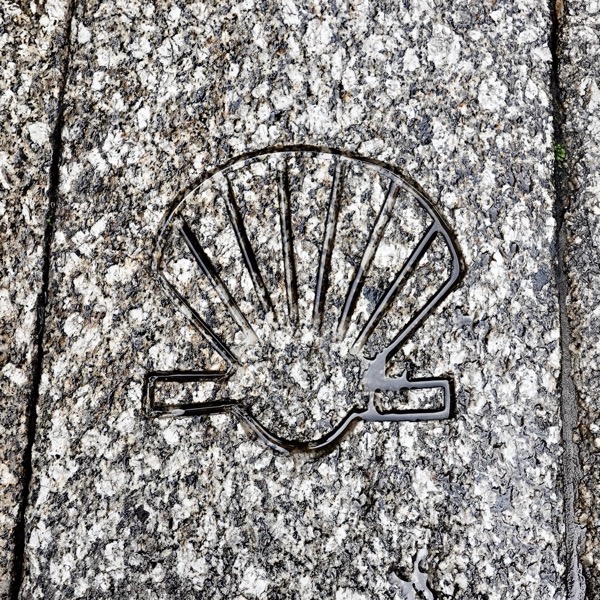

Back aboard the MS Douro Elegance, we enjoyed a leisurely lunch as we set sail from port. It was a relief to finally be on the move, and despite the light drizzle, the views were still captivating. We were particularly awestruck as we passed through the Carrapatelo Lock. As we neared the lock, the crew lowered the large canopy on the upper deck (so it wouldn’t get wiped off the top of the boat) using an automated system.
Inside the narrow lock, the ship was squeezed with only feet to spare on each side. The downriver gate closed behind us, and the water gradually filled the lock, raising the ship 115 feet to match the river’s level. When the upriver gate finally opened, we were amazed to see that the lowered canopy barely cleared a nearby bridge, with only about 10 feet of clearance above it. That was a close call, but an exciting experience.
—— Carrapatelo Lock ——

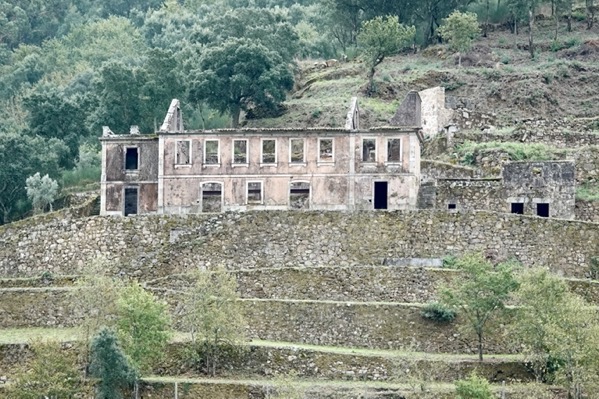
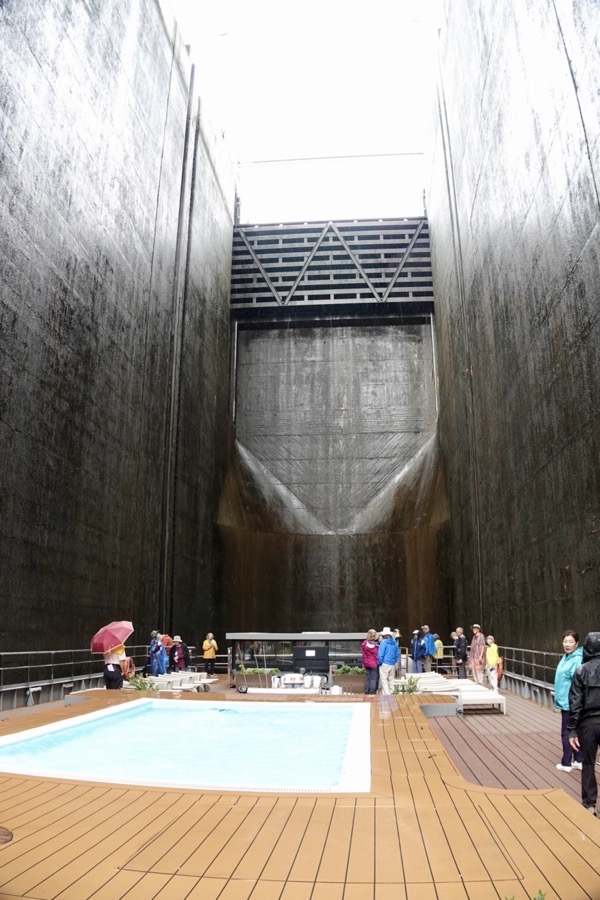
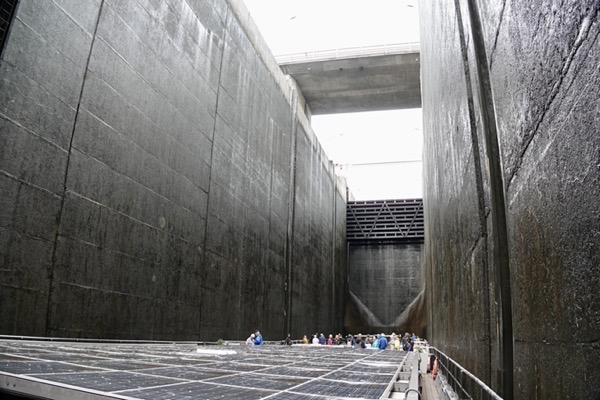


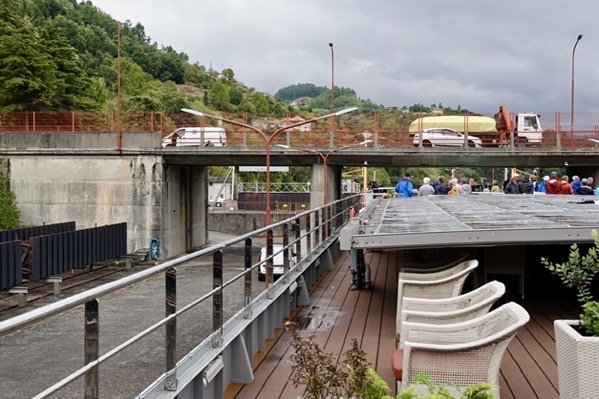
Around 4 p.m., we gathered in the ship’s lounge for a lecture by Smithsonian expert Erik, humorously titled “Expert the Baroque: Between Bad Puns and Visual Excess.” His talk was both entertaining and informative, providing his sarcastic perspective on the Baroque period.
Afterward, around 6 p.m., we docked in Peso da Régua. Jane, John M., and I decided to disembark and take a stroll around the town. Although Régua’s small port area was quite scenic, the town itself had a more business-like atmosphere, functioning primarily as a transportation hub for the region. We found a local pharmacy and were able to pick up some cough drops for Nancy before heading back to the ship after our brief land excursion.
—— Afternoon Lecture ——
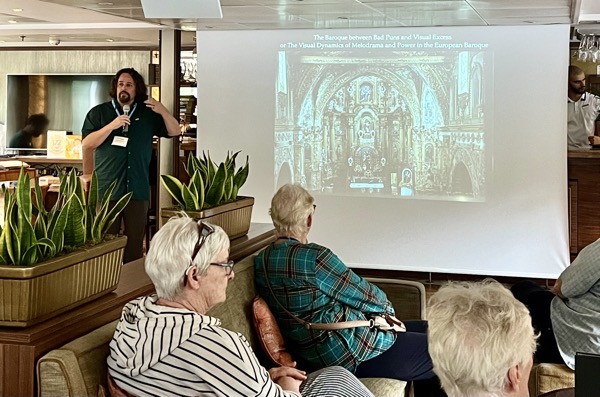
—— Peso da Régua ——
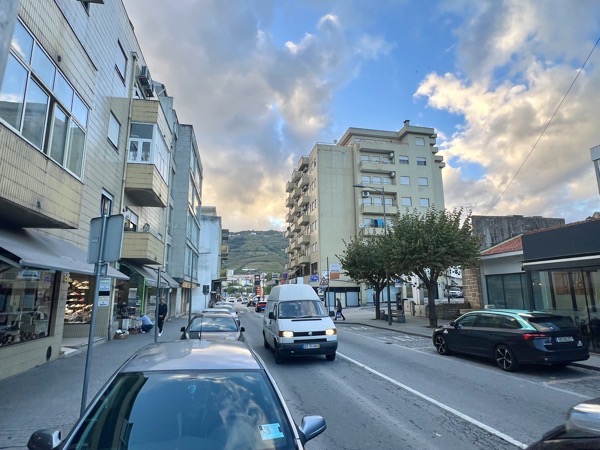
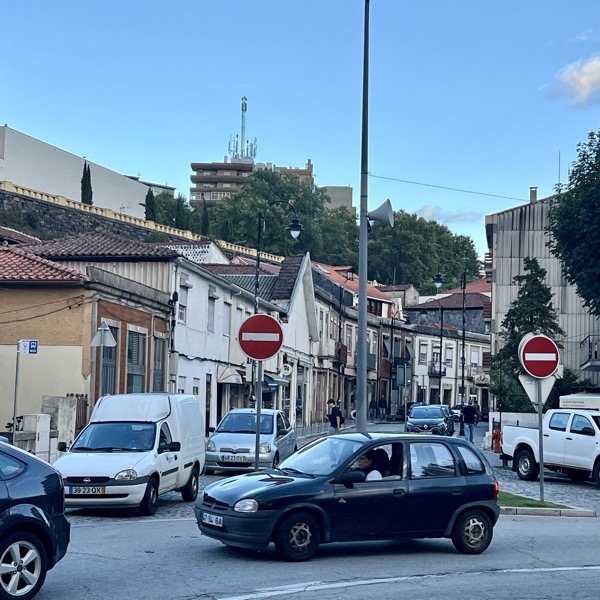
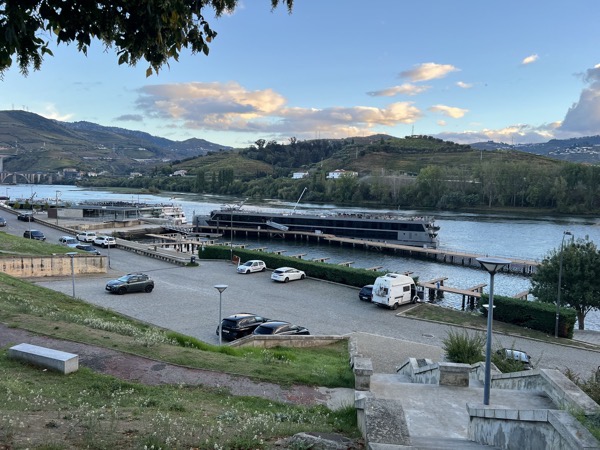
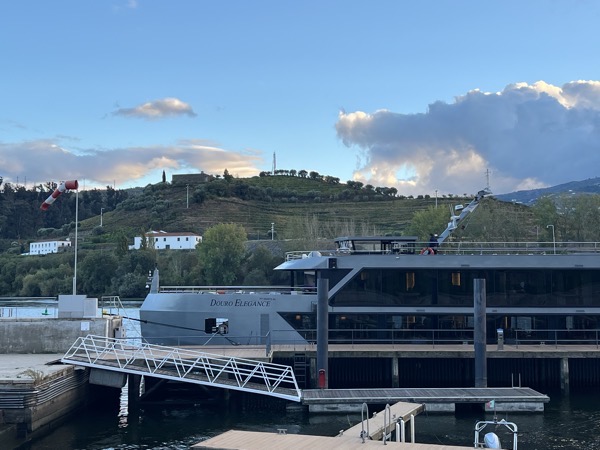
After returning to the ship, we made our way to the restaurant for dinner, but none of us had much of an appetite, so we ate lightly. Nancy didn’t even join us for dinner. Our group was feeling quite tired, but I decided to head to the lounge after dinner to listen to some live Portuguese folk music by a band called Fama Friends. I’m so glad I did. The music was lively and infectious, and before long, the audience was up on their feet, dancing and forming a conga line that wound through the lounge. Needless to say, I was completely exhausted by the time I finally got to bed, but I slept soundly, content after another memorable day.
—— Portugese Folk Music by Fama Friends ——
